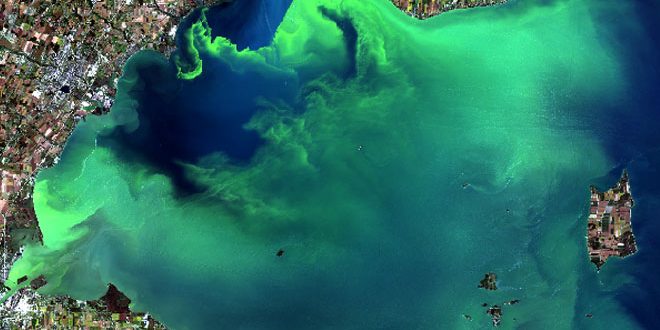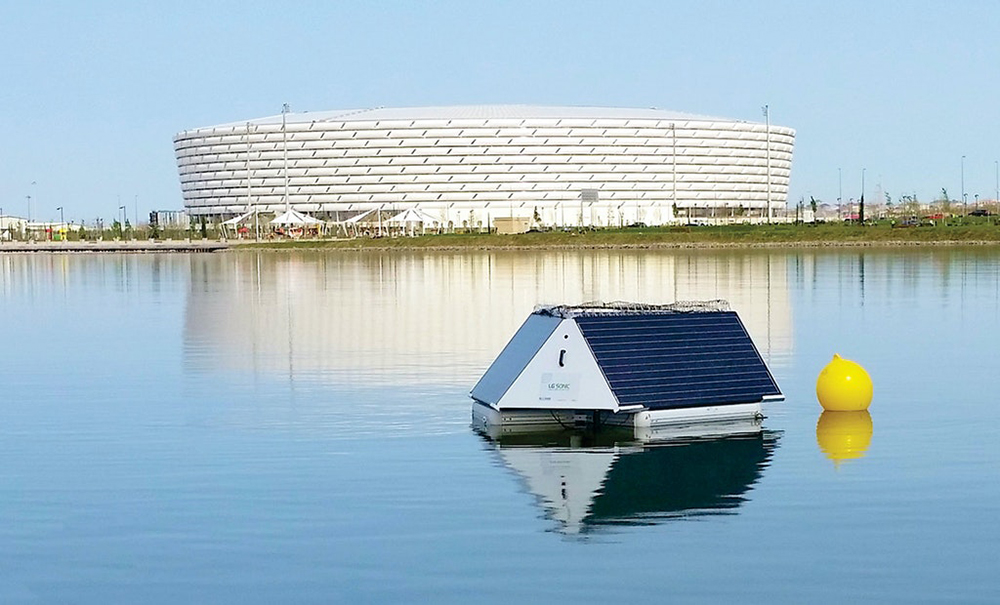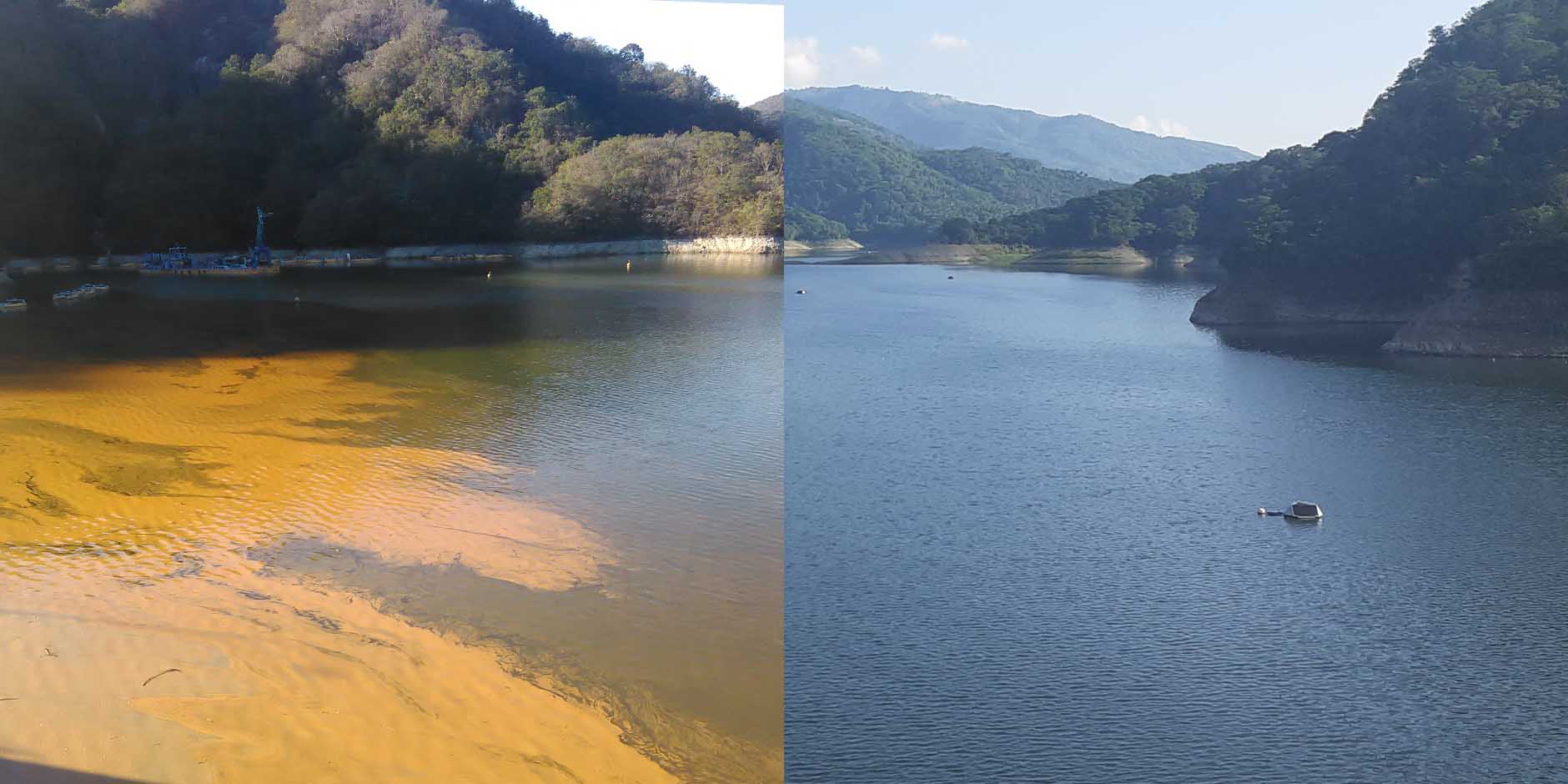Exclusive interview: H2O Global News Editor, Siôn Geschwindt, spoke with LG Sonic Co-Founder and Chief Technology Officer, Lisa Brand, about harmful algal blooms, why they are such a problem, and ultrasound technology as a potential solution.
In the hills overlooking the Dominican Republic’s capital of Santa Domingo lies the Valdesia reservoir.
Valdesia can store 137.54 million³ meters of water, contributes a large portion of the island nation’s hydroelectricity, and supplies drinking water to some four million inhabitants.
But for years the government has been in a non-stop battle to contain harmful algal blooms (HABs) in the lake.
What are harmful algal blooms?
Algae are vital to our survival. It’s estimated that at least half of the planet’s oxygen comes from these microscopic creatures, who produce it through photosynthesis before releasing it into the water.
However, HABs occur when colonies of certain algae grow out of control and produce toxic or harmful effects on people, fish, shellfish, marine mammals and birds.
The human illnesses caused by HABs, though rare, can be debilitating or even fatal.
“Toxic blue-green algae – or cyanobacteria – blooms have been associated with ALS, Alzheimer’s and other neurological disorders,” said microbiologist and CTO at LG Sonic, Lisa Brand. “It’s not just drinking the water that is a threat, even just being exposed to it through the air can cause a multitude of respiratory illnesses.”
While HABs are naturally occurring, they are becoming more frequent due to human activity.
According to NOAA, increased nutrient loadings and pollution, food web alterations, introduced species, water flow modifications, and climate change all play a role.
As a result, HABs are becoming more frequent, with one recent study indicating that a warming climate will only accelerate the growth of toxic algae.
“Harmful algal blooms are becoming a big issue worldwide,” said Brand. “For example, in 2016 a state of emergency was declared for Lake Okeechobee, Florida, due to a toxic blue-green algal bloom that threatened drinking supplies and anyone who got near the lake or its water – and this is an ongoing problem.”

Western Lake Erie and an algae bloom as seen from a Landsat-8 satellite in September 2017. (NASA/USGS)
In 2014, Lake Erie – one of North America’s great lakes – had an outbreak of the toxic cyanobacteria known as Microcystis Aeruginosa. Residents of Toledo, Ohio, woke to the news that overnight their water supply had become toxic. They were advised not only to avoid drinking the water, but also touching it – no showers, no baths, not even hand-washing.
Thankfully, Toledo’s water crisis only lasted for three days thanks to a hasty government response. But the problem is deep-rooted and even though HABs pose a serious public health risk, they are difficult to control.
Back in the Dominican Republic, the Santo Domingo Water and Sewage Corporation (CAASD) had tried to contain HABs using copper sulphate as an algaecide, but this didn’t solve the issue.
The Valdesia reservoir was simply too large to dose the entire water body multiple times a year with chemicals, and this approach also had adverse impacts on other aquatic life in the lake.
After years of frustration, CAASD eventually turned to ultrasound for answers.
Ultrasound power

LG Sonic’s MPC-Buoy (Credit: LG Sonic)
Netherlands-based algal bloom control specialists LG Sonic have developed a floating, solar-powered buoy that combines real-time water quality monitoring and ultrasonic sound waves to control HABs in lakes and reservoirs.
Brand explained: “The ultrasound reduces the buoyancy of the algae, blocking them from accessing enough sunlight and nutrients for growth.
“Over a period of time they eventually die off but the cell wall remains intact, preventing the release of toxins from the algae into the water.
“Treating algal blooms with ultrasound is frequency specific – different types of algae are best treated by certain ultrasound frequencies.
“Also, the algae are very adaptable and can start to tolerate certain frequencies, so our technology monitors the types of algae in the water, in which growth stage they are in, and whether they are responding to the ultrasound treatment, and then automatically alters the frequency to maintain the best result.”
The ‘MPC-Buoy’ collects real-time data on water quality parameters through onboard sensors. These sensors are linked to software with machine learning capabilities, so the more data it gathers the smarter it becomes at predicting how the algae will respond.
And unlike chemical treatment, the ultrasound frequency has no impact on aquatic organisms.
“You actually find that the ecosystem bounces back much faster because when the algae die benthic plants start to absorb the excess nutrients and re-establish, increasing dissolved oxygen and improving water quality,” said Brand.
While the root causes of HABs are numerous, one thing is for certain – the problem is now so severe that active measures need to be taken, not just to prevent blooms, but to restore lakes that are already affected.
Seeing is believing
Earlier this year, CAASD installed 47 LG Sonic MPC-Buoy’s to cover the entire Valdesia reservoir; the world’s largest water body treated by ultrasound to date.
According to the water authority, the first results in terms of water quality improvement were visible between two and three weeks after the installation of the systems.

Image: Before (left) and after (right) installation of the MPC-Buoys (Credit: CAASD)
Two months after the start of the project, the results have already exceeded the set targets with an 87% improvement in water quality.
The MPC-Buoy has allowed CAASD to monitor important algae and water parameters in the entire water surface of the Valdesia reservoir.
The collected data is delivered in real-time to web-based software, allowing water quality specialists from LG Sonic to manage algal blooms from their headquarters, 10,000km away in the Netherlands.
“We are very happy for having the LG Sonic services, since for us it is a guarantee that the waters that we have in the Valdesia dam will be kept in appropriate conditions, so we can keep using it and be able to continue satisfying the drinking water demand of approximately 40% of these four million people who live in the greater Santo Domingo area,” said CAASD Director, Luis Salcedo.
HABs in the long term
The success of ultrasound to combat HABs is a promising sign, and these buoys will no doubt become a more permanent fixture in lakes across the world.
In the long-term, controlling these harmful outbreaks will require smart technologies but also strong partnerships, policies, and intelligent data.
One way to prevent algal blooms is through real-time water quality monitoring for key parameters such as chlorophyll-a, phycocyanin, temperature, DO, pH, and turbidity, which allows you to see trends and forecast harmful blooms.
Policy shifts to prevent excessive nutrient loads are also crucial, for instance, after years of HABs in Lake Erie, the US and Canada agreed to cut phosphorus loading into lake by 40%.
Fundamentally, the long-term success of these solutions requires a shift in policies and human activities. These changes will not come overnight and need to made holistically in conjunction with other sustainability goals and in consultation with a variety of stakeholders.
Main image: Algal Bloom at Lake Okeechobee, Florida (Credit: Pedro Portal)
Do you have an article or video that you would like to share? Submit your article here or keep up with the latest news from the water industry and wastewater industry by subscribing to our weekly newsletter.








[…] its toxic cyanobacteria outbreaks or mass eutrophication of our waterways, algae have been getting a lot of bad press […]